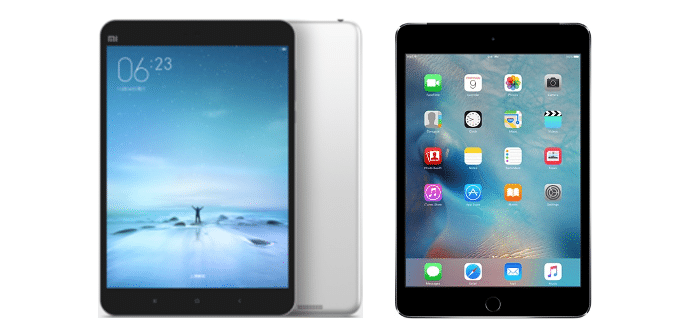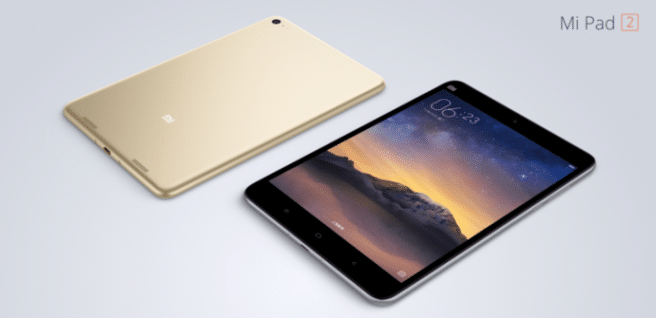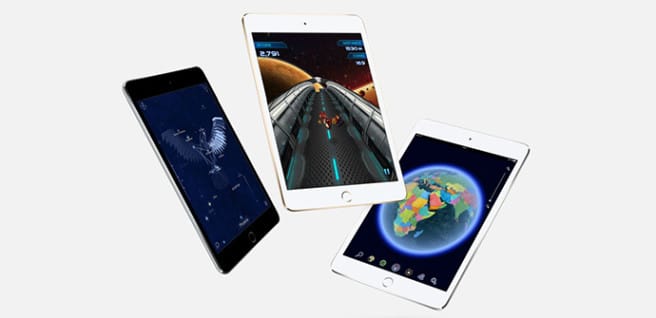
Just a few hours ago the new tablet from Xiaomi And, of course, the first tablet we have to face is the one that, even leaving aside controversies about imitations and copies, is undoubtedly its great inspiration: the iPad mini. We also have a new model of the tablet from Apple Lossless Audio CODEC (ALAC), fresh enough to make this one even spicier comparative. Is it worth it or not the extra investment involved in getting the tablet from the apple company? We help you decide by reviewing your Technical specifications.
Integrated
One of the clear advantages that the tablets of Apple Lossless Audio CODEC (ALAC), so far on those of Xiaomi were the finishes, but it seems that with the Mi Pad 2 this could be over, since one of its great novelties is precisely that it also already comes with an aluminum casing. Where the iPad mini 4 continues to go ahead, for those who are especially concerned about security, is having a fingerprint reader.
Dimensions
Although it is not confirmed yet, it seems that the Mi Pad 2 It will be basically the same size as its predecessor, which means that it is practically identical in this sense to the iPad mini 4 (20,2x13,54 inch against 20,32x13,48 inch). In which there has been an important advance is in thickness, although not enough to reach the tablet of Apple Lossless Audio CODEC (ALAC), (6,95 mm against 6,1 mm), as is the case with weight (322 grams against 299 grams).

Screen
Limiting ourselves for the moment to the basic technical specifications (you already know that there are other interesting parameters, such as brightness levels or contrasts, but we do not have information about these yet), the tie is absolute as far as the screen is concerned, since they have the Same size (7.9 inches), the same aspect ratio (4:3, optimized for reading), the same resolution (2048 x 1536) and therefore the same pixel density (PPI 324).
Performance
The balance tips to the side of the Mi Pad 2On the other hand, when we go to the performance section, not so much for the RAM (2 GB in both cases), but by the processor (a Intel Atom X5-8500 quad-core and frequency 2,24 GHz In front of a A8 dual core and frequency 1,5 GHz). It must be borne in mind, of course, that iDevices always perform better than you would expect from their hardware thanks to the fact that they have custom-made software.
Storage capacity
We will not find any difference if what interests us is the basic model, which comes with 16 GB of internal memory in both cases, but if we are looking to have the largest possible storage capacity, the advantage is for the iPad mini 4, which has a version of 128 GB, while the maximum for the Mi Pad 2 is 64 GB.

Cameras
It is probably not the most important section when choosing a tablet but, in any case, the tablet of Xiaomi It once again has an advantage in the cameras section, although only with regard to the front camera (5 MP against 1,2 MP), because when it comes to the main camera they are tied, with 8 MP in both cases.
Autonomy
Although the autonomy also depends on the consumption and, therefore, definitive conclusions cannot be drawn until tests of real use have been carried out, the truth is that the tablet of Xiaomi Part with advantage in this section by having a battery with a much higher capacity (6190 mAh against 5124 mAh).
Price
The price is undoubtedly the best asset of the Mi Pad 2, even assuming that the passage through importers will suppose that in our country it will make it more expensive than in China, and that is that it will be sold there for approximately $150, which is less than half the price of iPad mini 4, that is of $389. What do you think? Is it worth the price difference to get the compact tablet from Apple Lossless Audio CODEC (ALAC),?
Maybe I was late to comment. but there it goes.
This Chinese tablet looks very promising in many aspects, but personally the connectivity issue hurts, since it only brings Bluetooth and Wifi, in case of wanting the device only to read there would not be much problem, but it is worth rescuing that Having an LTE connection could help it, although personally it hurts me that it does not bring GPS because today's applications are guiding many procession services based on it.
I would give it as a purchase option if you only want a device to read, but ultimately the support of the Apple Giant such as the acquisition of spare parts and a "Maintenance in OS" gives it a plus that Xiaomi can not provide in Any part of the world.
In summary ... To get out of trouble and when do you see the Apple -Just in poverty- and you do not need more than Wifi or Bluetooth connectivity Xiaomi is the answer, but if you are looking for greater connectivity, storage and a good backup in terms of spare parts and service In short, it is worth letting time pass and buying an Apple device, of course all this thinking that you do not have favorites between IOS or Android, because sometimes people prefer a cardboard box with a screen that has Android before it is hermetic. inflexible Apple systems.